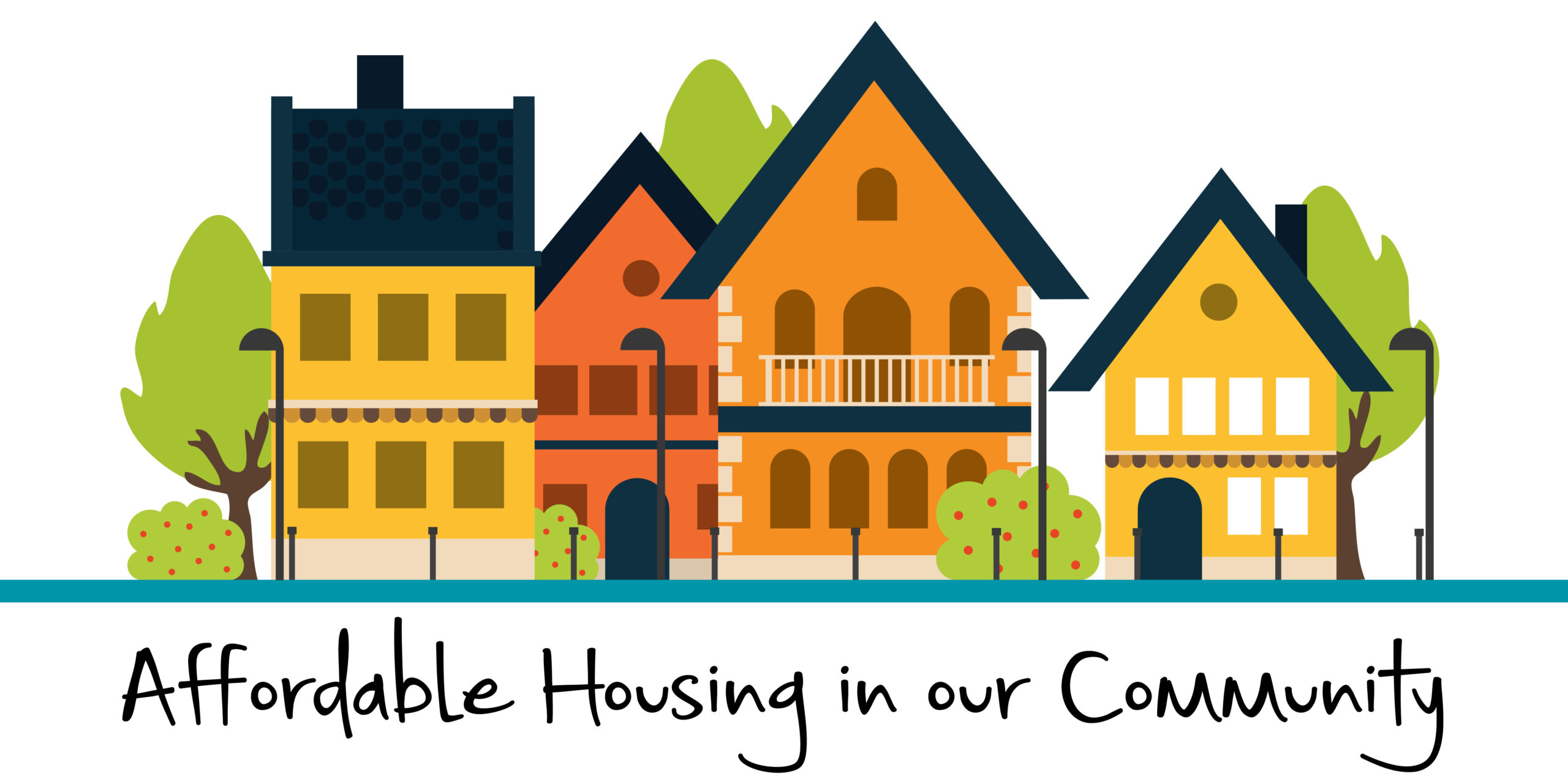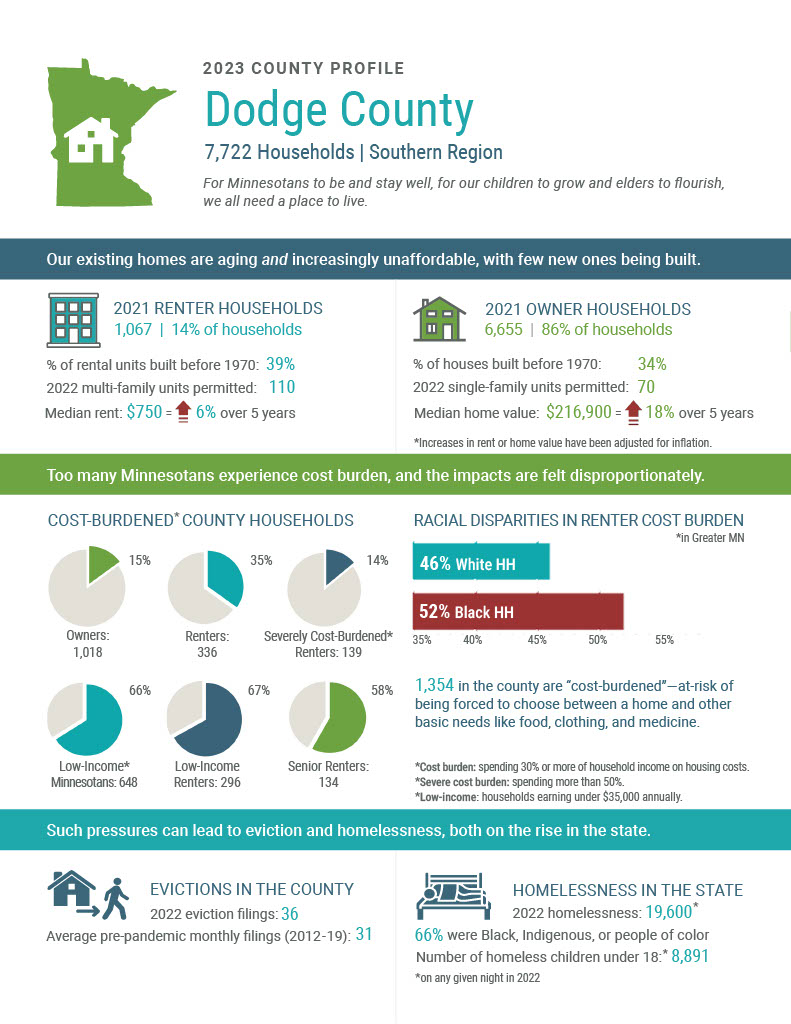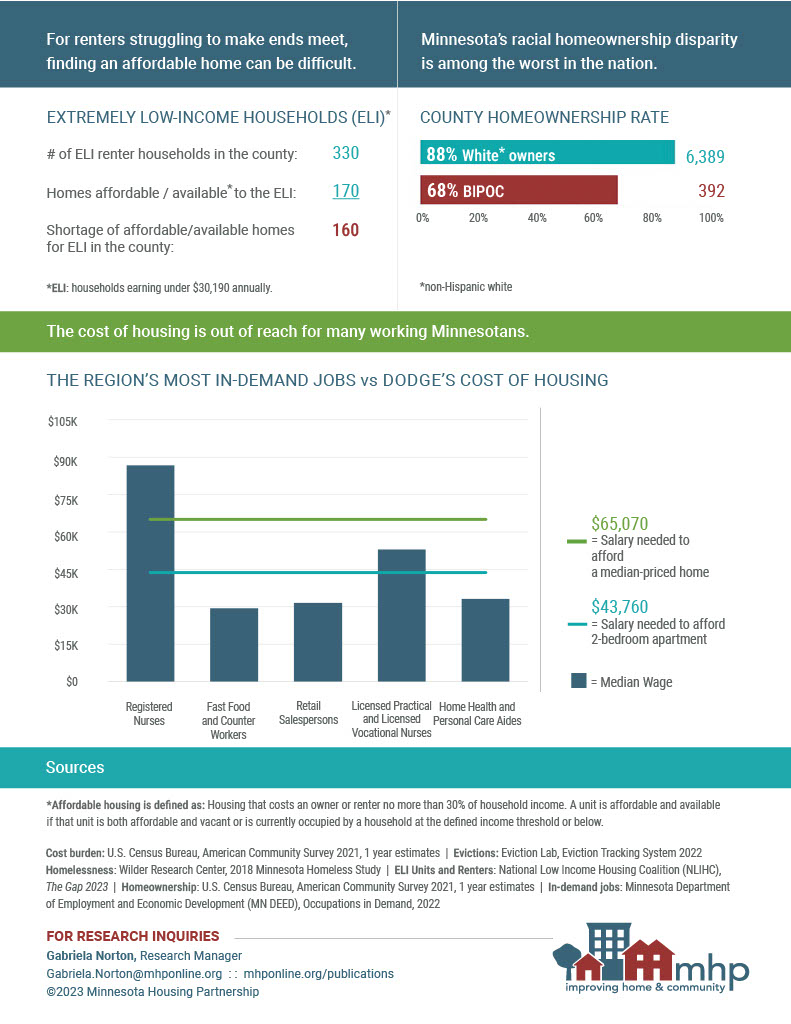Dodge County Housing Profile 2023

MN Housing Partnership’s County Profiles have been a key source of housing information for advocates, elected officials, and the media since 2009. These County Housing Profiles serve as a valuable guide to understanding Minnesota’s community and housing needs, and provide compelling data that makes the case for the critical need for housing investments. The new 2023 data features different demographics of cost-burdened households paying at least 30% of their income for housing, changes in rent and home prices, eviction filings compared to pre-pandemic rates, racial disparities in homeownership, a comparison of top in-demand wages compared to current housing costs, and more.
Key takeaways from the 2023 County Profiles:
- In every county in Minnesota, at least 1 in 4 renter households pay more than they can afford for housing.
- In every county in Minnesota, at least 1 in 10 homeowner households pay more than they can afford for housing.
- Every county in Minnesota has a shortage of affordable and available rental homes for extremely low-income households. 79% of counties have a shortage that exceeds 100 homes, and 31% have a shortage exceeding 500 homes.
- While white, non-Hispanic households have strong homeownership rates throughout the state, ranging from 66% to 88%, households of color have significant homeownership disparities in many areas of the state. In Minnesota’s most populous counties*, the homeownership rate for BIPOC households ranges from 38% to 63%.
- 60 of 87 counties have seen an increase in evictions filings compared to pre-pandemic averages.
- In 40 of 87 counties, no permits for multifamily construction were issued in 2022.


*Counties with over 100,000 households.
Data for the County Profiles is gathered from a variety of sources including the American Community Survey (ACS) from the US Census Bureau, Housing and Urban Development (HUD), Eviction Lab, Minnesota Department of Employment and Economic Development, and the Wilder Research Center.

